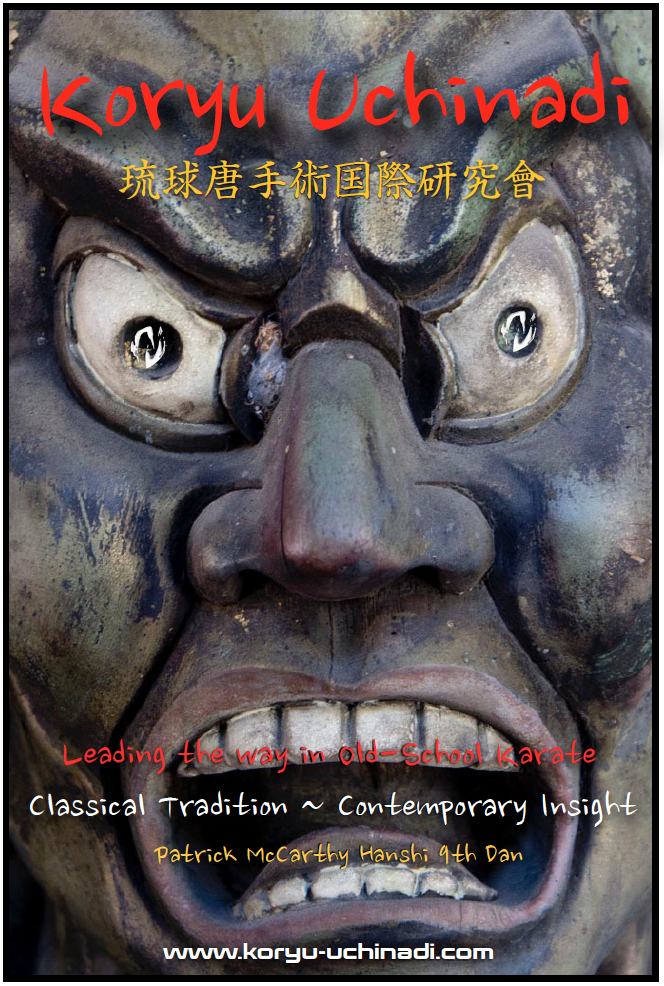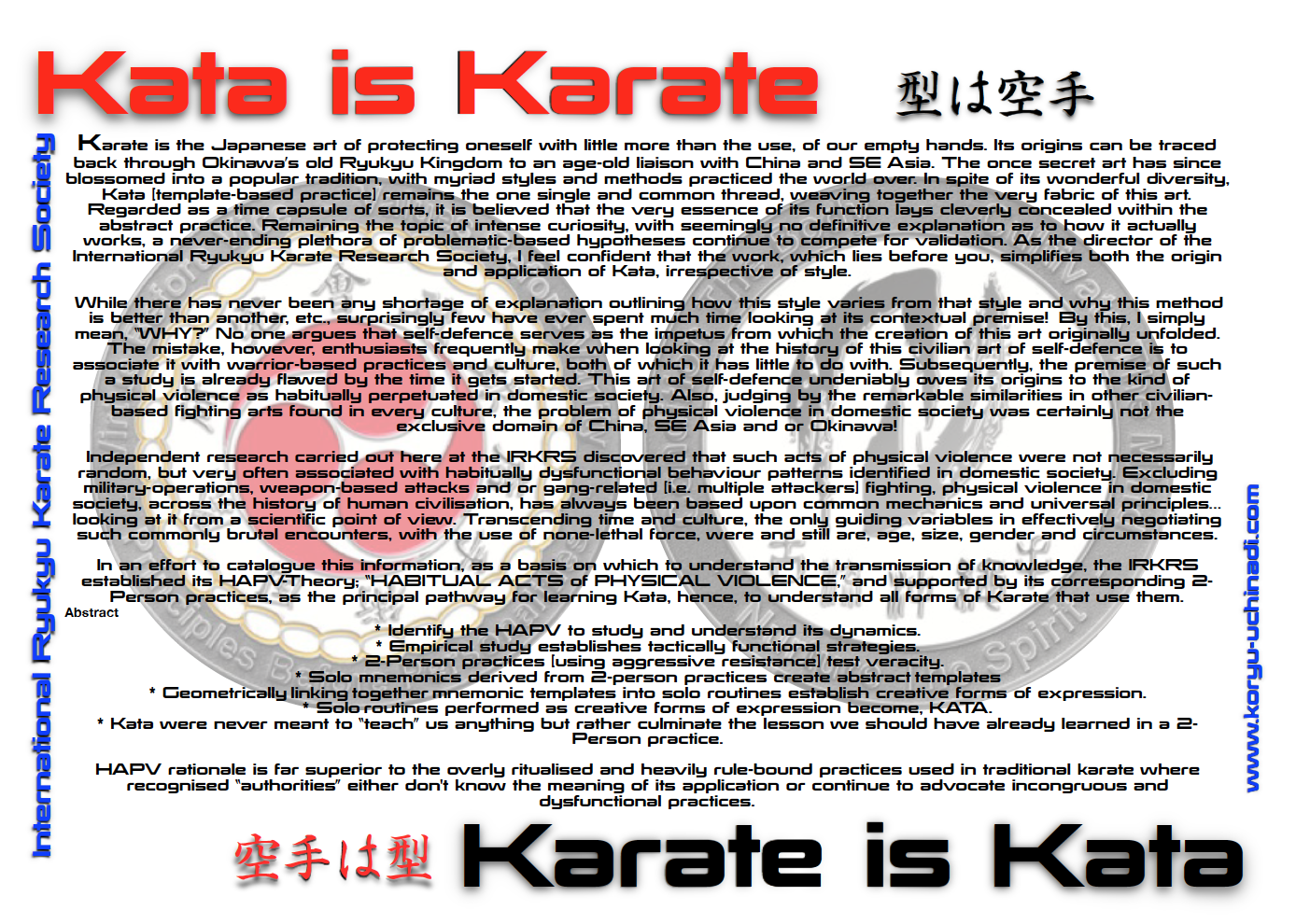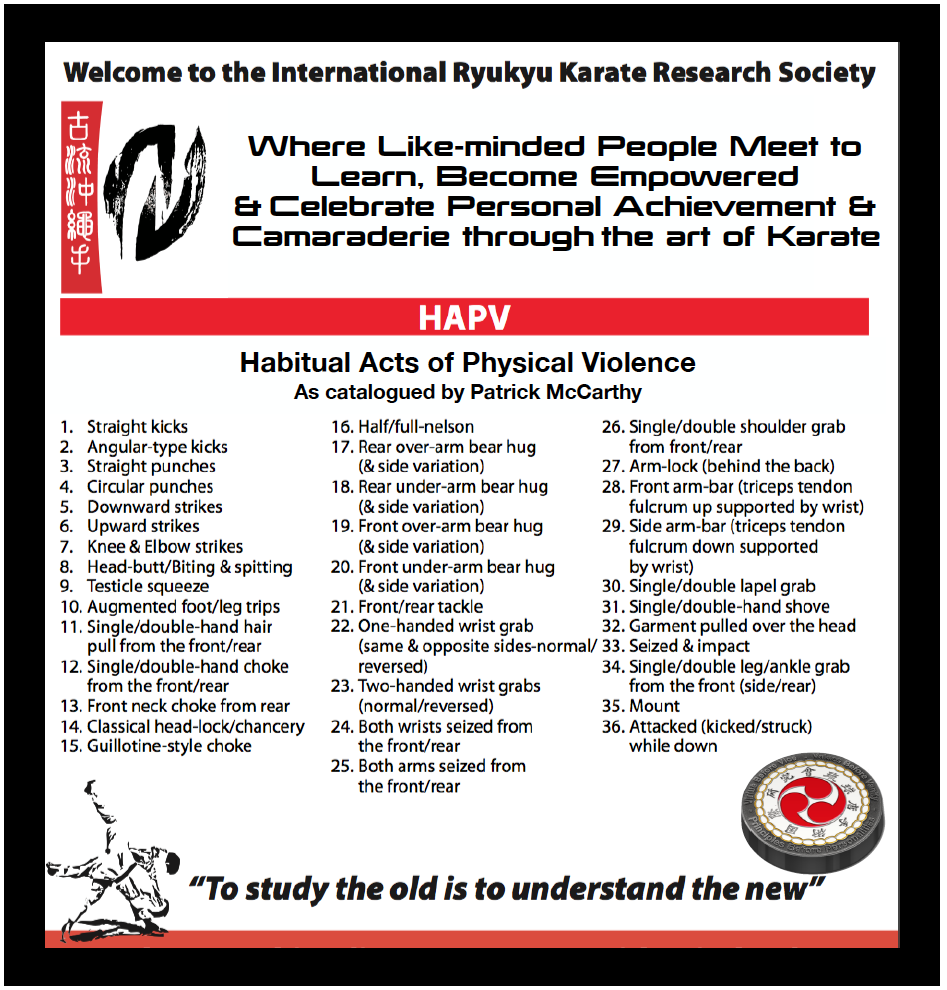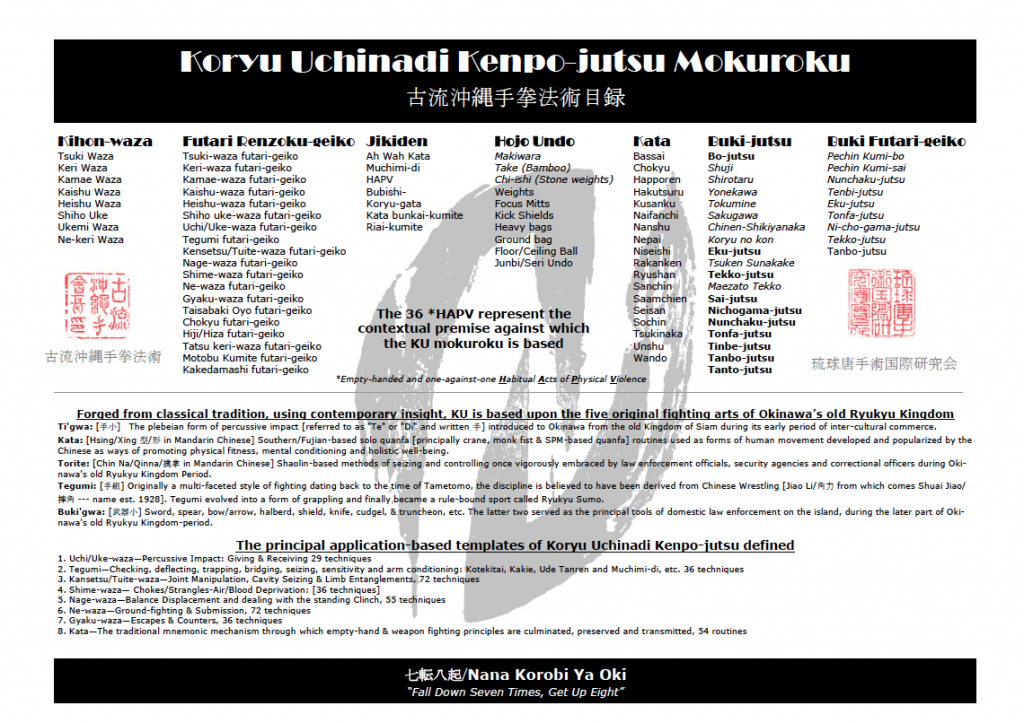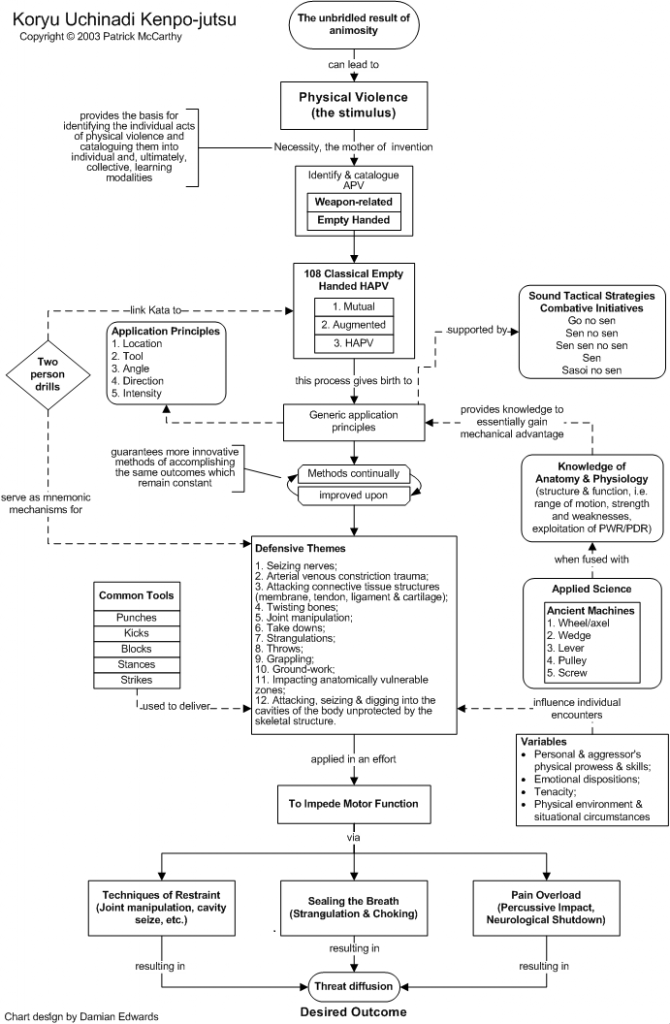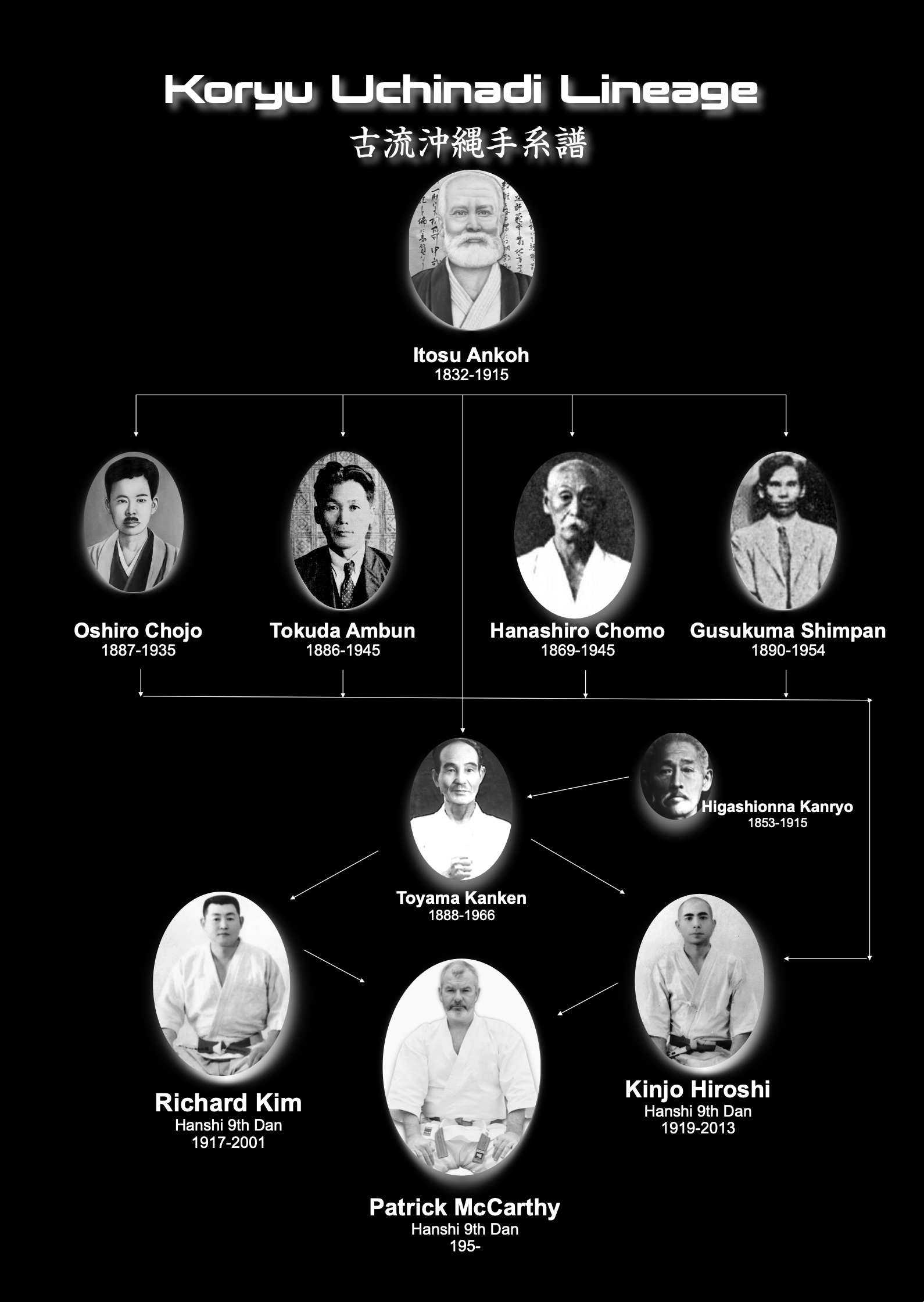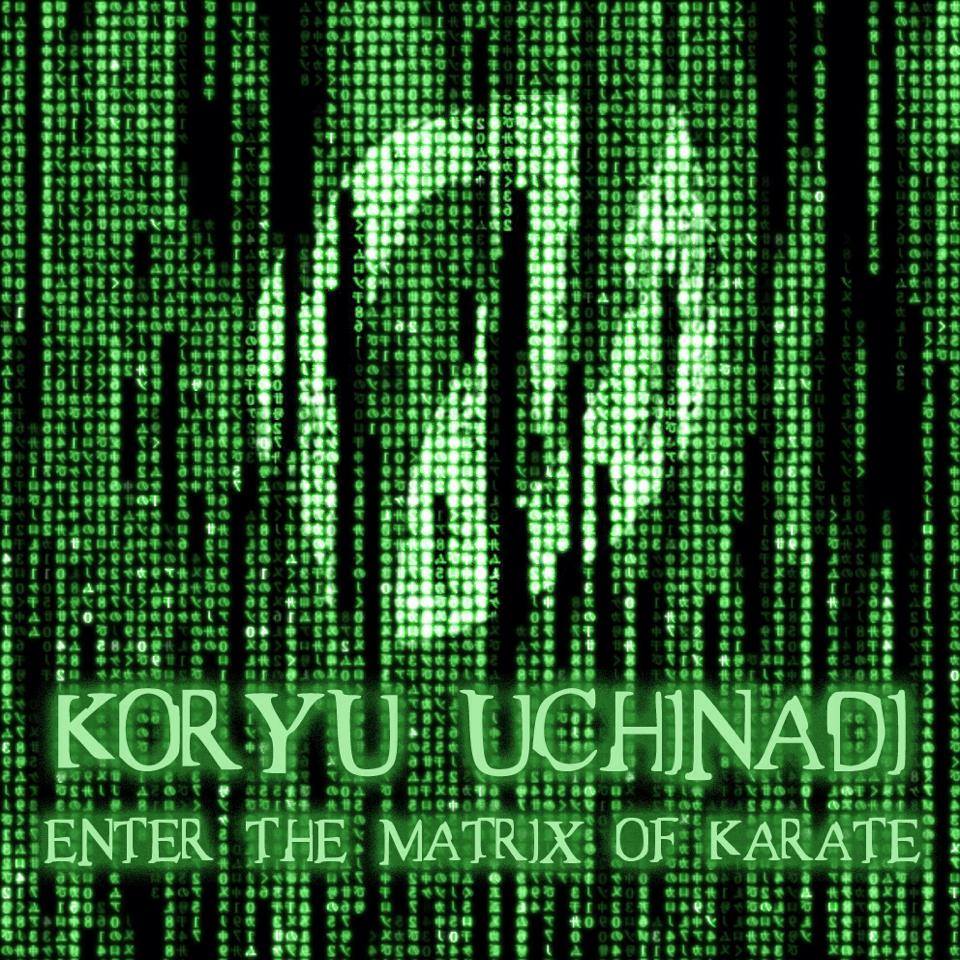Video Clips
This is Koryu Uchinadi KU 2-person Drill KU 2-person Drill KU 2-person Drill KU 2-person Drill KU 2-person Drill KU 2-person Drill Taisabaki Oyo 1-6
Although Karate is a uniquely Japanese tradition today its actual roots can be traced back to the tiny island of Okinawa, and the Fujian/Chinese-based quanfa practices, which haphazardly found their way there during its old Ryukyu kingdom period.
Once a compulsory practice among local Okinawan law enforcement officials, today its defensive concepts have evolved into a challenging competitive sport, a popular form of self-protection and a vibrant cultural recreation.
Having long been an effective adjunct supporting domestic law enforcement arrest methods in China, the discipline was brought into use during Okinawa’s old Ryukyu kingdom Period, after the prohibition of weapons and largely because of its effective tactical strategies in seizing and control.
Handed down through oral tradition, and usually in an ironclad ritual of secrecy, much of its original history and unique practices have been lost in the sands of time. As a researcher, I believe the modern interpretation of Karate, in its many variations, has evolved in to something quite unlike that which its original pioneers had in mind when first developed. While I don’t object to what modern karate has become, I can no longer support its interpretation of classical Kata or the overly ritualised, rule-bound and completely unrealistic application concepts being passed off as, “practical self-defence techniques!”
Having already done the research, I’ve saved the learner the time and trouble of wandering through an endless minefield of myth and mysticism, and the quagmire of half-truths and self-serving propaganda. Having gained worldwide recognition, the KU method leaves no room for the kind of ambiguity exampled elsewhere in traditional karate; i.e., the kind of ambiguity which has given kata such a “bad name.”
KU represents a clear and precise pathway to mastery. If and when followed methodically, I am confident that the KU method will produce more far-reaching results than if instructors work toward the same goal independently.
Kata is Karate
[in PDF]
In an effort to catalogue our pathway, as a basis upon which to understand the transmission of knowledge, the IRKRS established its HAPV-Theory in 1993; i.e. The “HABITUAL ACTS of PHYSICAL VIOLENCE,” supported by its scenario-driven corresponding 2-Person practices, as the principal pathway for learning Kata, hence, to understand all forms of Karate that use them.
Abstract
* Identify the HAPV to study and understand its dynamics.
* Empirical study establishes tactically functional strategies.
* 2-Person practices [using aggressive resistance] test veracity.
* Solo mnemonics derived from 2-person practices create abstract templates
* Geometrically linking together mnemonic templates into solo routines establish creative forms of expression.
* Solo routines performed as creative forms of expression become, KATA.
* Kata were never meant to “teach” us anything but rather culminate the lesson we should have already learned in a 2-Person practice.
HAPV rationale is far superior to the overly ritualised and heavily rule-bound practices used in traditional karate where recognised “authorities” either don’t know the meaning of its application or continue to advocate incongruous and dysfunctional practices.
Kata Origins ~ All Kata have lineage based in function.
I am amused by the naïve presumption that kata were etched in stone by “gods” and never meant to be altered! Yet, and in spite of such a belief, “authentic” kata continue to be altered [if only cosmetically] by the very people who perpetuate the myth … citing several seemingly acceptable reasons [few of which ever seem to have anything to do with actual function]. It’s even common to see the same kata practiced, performed and taught differently by various branches of the same organisation and or style.
By understanding the theory of its contextual premise [i.e. HAPV] it becomes possible to understand how form [i.e. the techniques] equals function and, by extension, how the technique is subsequently performed. Unless it’s exclusively used as a competitive routine in a rule-bound sporting event [in which case there are long-standing rules of exactness with some allowances for creative delivery…timing, speed, rhythm, etc.] the way a technique is performed represents its function.
Deep roots strengthen the foundation of this art and yet wings are what provide us with the means to continue forth on the journey of discovery. Practicing karate inconspicuously links us to its past; through training together we forge important bonds of friendship, and by living the art we honour its heritage, which in turn, keeps this spirit alive.
I am but one of many researchers at the forefront of a challenging movement trying to make a difference by restoring the essence of old-ways. If there is any truth to the rumour that, in doing so, I’m helping to change the face of how traditional kata is perceived and practiced, then I hope it might serve to inspire others to … think outside the box, cross train and heed the words of Sir Isaac Newton, a man who after acknowledging the value of understanding the research and works created by notable thinkers of the past, wrote “If I can see any farther [than others], it is only by having stood on the shoulders of giants.”
Remarkable insight comes from understanding the original work of the pioneers. Moreover, it also provides the opportunity to see continual change as an inevitable part of tradition, rather than as a perceived threat. Tradition should inspire innovation, not limit it. Remembering the superb wisdom of Krishnamurti “We are all working together in true spirit of cooperation, in which there is really no single authority. It is our mutual interest in understanding the original teachings that bring us together to find truth”
The fundamental basis of Koryu Uchinadi is to provide life protection skills. In doing so it’s practice also conditions the body, cultivates the mind and nurtures the spirit, in order to improve health, it’s holistic purpose; build moral character, it’s social aim; help empower oneself in order to surmount human weakness, it’s philosophical nature; and in doing so, reveal inner peace and tranquility, it’s spiritual essence.
